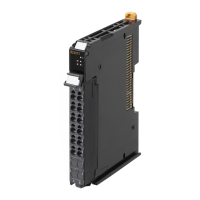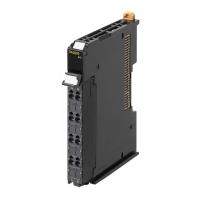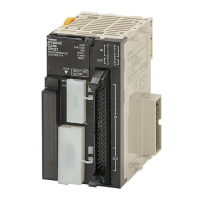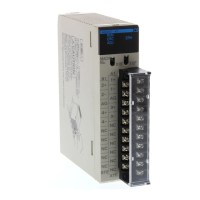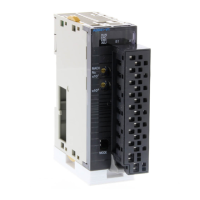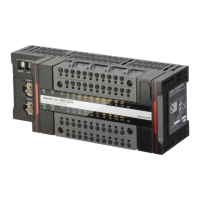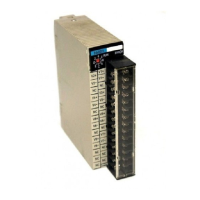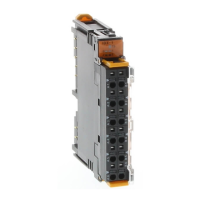5 I/O Refreshing
5 - 4
NX-series Digital I/O Unit User’s Manual (W521)
The I/O refreshing method between the EtherCAT Coupler Unit and each NX Unit is determined by
whether the distributed clock is enabled or disabled in the EtherCAT Coupler Unit.
The EtherCAT Slave Terminals with enabled distributed clocks and all EtherCAT slaves that
support DC synchronization execute I/O processing based on Sync0 that is shared on the
EtherCAT network. However, since the specifications and performance for the timing to read
inputs or to refresh outputs for EtherCAT slaves and NX Units are different, the timing to read
inputs or to refresh outputs is not simultaneous.
Refer to the manuals for the EtherCAT slaves for information on the timing to read inputs or to
refresh outputs in EtherCAT slaves.
The I/O refreshing methods that you can use depend on the model of the NX Unit. After you decide on
which I/O refreshing method to use, select the NX Units.
5-2-2 Setting the I/O Refreshing Methods
Distributed clock
enable/disable setting
in the EtherCAT Cou-
pler Unit
NX Units that support
only Free-Run refresh-
ing
NX Units that support
both Free-Run refresh-
ing and synchronous I/O
refreshing
NX Units that support only
time stamp refreshing
Enabled (DC Mode) Free-Run refreshing Synchronous I/O refresh-
ing
Time stamp refreshing
Disabled (Free-Run
Mode)
Free-Run refreshing Free-Run refreshing Operation with time stamp
refreshing is not possible.
*1
*1. Refer to P. 5-22 and P. 5-27 for information on the operation when the DC is disabled.
5-2-3 Selecting NX Units

